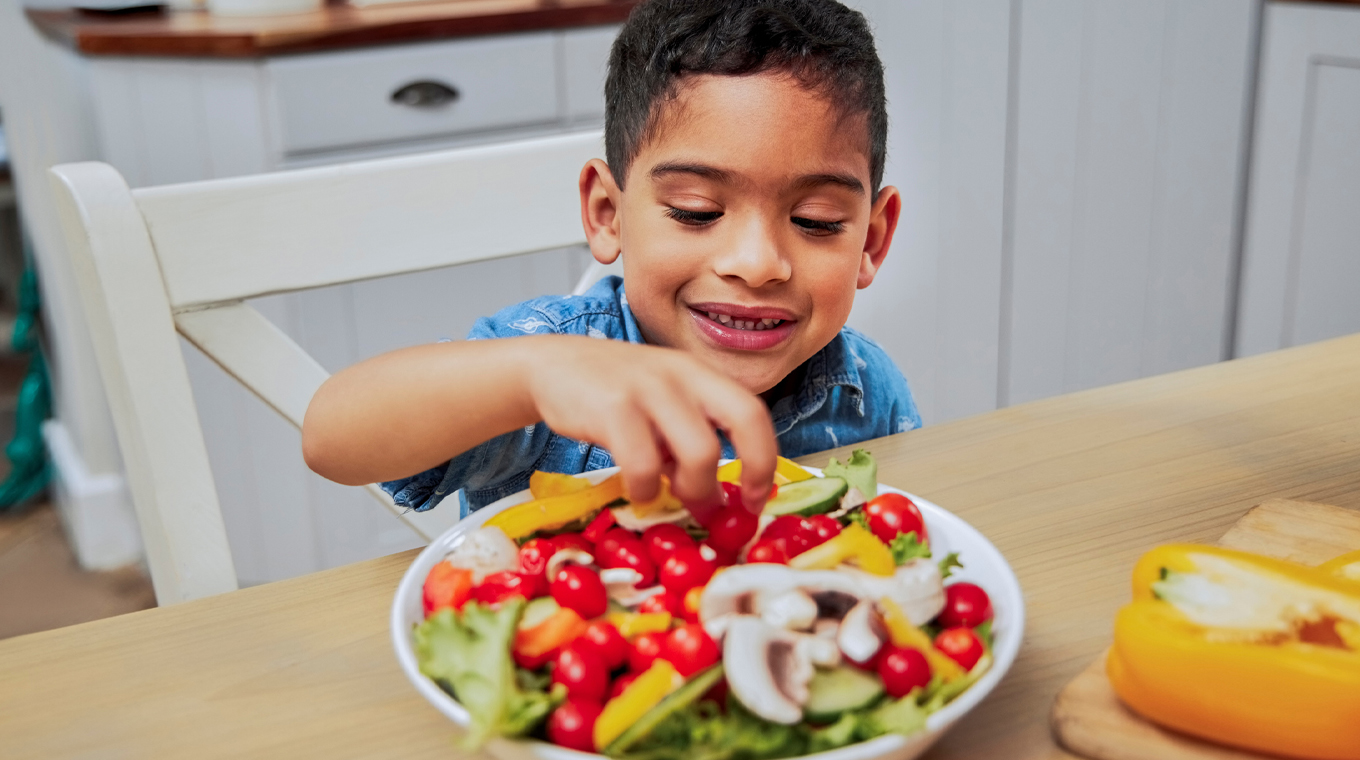In this article
Vegetarian cooking has been on the uptick in recent years. In fact, one in 10 Americans say they lean toward a plant-based diet, citing a variety of reasons, including, budget, health, ethics, and environmental impact concerns.
Vegetarianism is an all-encompassing term for a variety of diet preferences; those who do not eat eggs or meat but will consume dairy products like cheese and milk, are Lacto-Vegetarians, while someone who eats eggs is an Ovo-Vegetarian. Lacto-Ovo-Vegetarians consume eggs and dairy.
Vegans on the other hand, typically do not eat any animal products which can include honey and even some products made with artificial colors due to their use of products like carmine; derived from insects. So, if the thought of potentially eating bugs is an incentive for you to amp up your vegetarian cooking skills, here are some tips for vegetarian cooking novices!
Meat substitutes to get you started

One of the easiest ways to begin a vegetarian diet is to start switching out meat and dairy with plant-based alternatives. By experimenting with meatless substitutes like soy products (found in tofu and tempeh) and seitan — a high protein wheat-gluten meat substitute — you open up a world of possibilities and a variety of textures and flavors. Plant-based milk, butter, and cheese also make going vegetarian a lot easier and it’s just a matter of trial and error when it comes to finding your favorite.
“My advice when moving from a diet that includes meat to a plant-based diet is to try different plant-based meat alternatives. Some are very good, and you can hardly tell the difference,” mom of two Elle Cole told Mom.com. “Try various options to see which brand you like the most. Some of my favorite plant-based brands are Beyond Meat, Impossible Burger, Morning Star, Field Roast, and Gardein.”
These products can be marinated, grilled, and manipulated in a variety of ways to create the exact taste and texture you’re trying to replicate. Even die-hard burger aficionados have been pleasantly surprised by the taste and texture of Beyond Meat plant protein products.
Vegetarian cooking: Recipes everyone will love

“As you continue your vegetarian journey, you can wean yourself off the alternative meats and eat more beans, legumes, and nuts for your protein options,” Cole continued. “Plant-based meats contain a lot of salt to make them flavorful, so I try to eat them in moderation.”
There are a variety of whole food meat substitutions available to incorporate into your meals. Jackfruit can be shredded and smothered in barbeque sauce for a vegetarian pulled-pork style sandwich or made into crab-less cakes with the addition of Old Bay Seasoning and nori.
Similarly, mashed chickpeas make a great base for tuna-style sandwiches or plant-based chicken salad. Portabello mushrooms make great whole-food substitutions for meat, as do mushrooms. And this vegan mac and cheese recipe uses nutritional yeast, lemon juice, and boiled, pureed carrots and potatoes to replicate a family favorite.
If you’re looking for vegetarian cooking inspiration, Tik Tok and Instagram are your best bet. Influencers like Tabitha Brown have gone viral sharing vegan and vegetarian recipes for hot dogs and bacon made from carrots and mushrooms. A quick scroll through some of these short-form videos will provide enough vegetarian cooking inspo to inspire a week’s worth of meal plans.
Don’t forget your fancy kitchen appliances when it comes to branching out and trying vegetarian recipes. The air fryer makes quick work of roasted Brussels sprouts and the possibilities are endless with an electric pressure cooker. The Ninja Foodie Blender can be used to make smoothie bowls, nut butter, plant-based dips, sauces, and soups.
Finally, for vegetarians who still consume eggs and dairy products, simply amping up vegetables in your favorite dishes can turn a typical meat-based meal into a lighter and sometimes more healthful version.
Kids' vegetarian meal ideas

Vegetarian cooking when you’ve got a houseful of kids can be particularly challenging, especially when they’ve grown accustomed to mainstream processed foods like chicken nuggets, mac and cheese, and ham and cheese sandwiches. The chances you’re going to be able to pass off carrot hot dogs at a Minions-themed birthday party are slim to none.
It’s easy enough, though, to swap plant-based meats in your family’s favorite recipes and there are plenty of kid-friendly vegetarian meal options. Here are a few recipes to start with:
Baked Mac and Cheese with Broiled Tomatoes
Vegetarian Bolagnese with Buccatini
Vegetarianism as a family affair is one thing, but parents should proceed with caution if their child suddenly decides they no longer want to eat animal protein.
“While I strongly advocate really listening to your child’s reasons, as a physician I am also on the alert for a teen who does NOT seem to have well-thought-out positions,” pediatrician Daphne N. Shaw advised on the Cook Children’s Hospital website. “Beware of kids and teens who choose veganism for the WRONG reason, such as using it as a cover for excessive or unhealthy caloric restriction and eating.”
Both adults and children should be mindful of nutrition intake
“Animal-based foods (like meats, fish, dairy, and eggs) are considered complete proteins, containing all 9 essential amino acids in a quite digestible form,” Shaw explained. “On the other hand, plant-based foods are generally deficient in at least one amino acid, so in order to get all 9, you need to eat a variety of different plant-based foods with complementary proteins.”
It may be necessary to supplement your diet with calcium for Vitamin D or iron to protect against iron deficiency anemia. Be sure to consult with your primary care physician before eliminating any food groups or beginning vitamin supplementation; a nutritional testing and blood work panel can help identify any issues.




